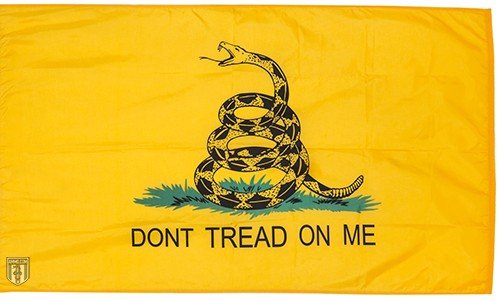.jpg)
June 17th, 1775, the Battle of Bunker Hill. The Gadsden Flag holds special significance to this day.

This battle, still celebrated in Boston, is where Colonel William Prescott famously gave the order not to fire “until you see the whites of their eyes.” One thing the battle underscored was that the Continental forces were woefully low on ammunition. In October of that year, the Continentals learned that two ships filled with weapons and gunpowder were headed for Boston. Four ships were commissioned into the Continental Navy, led by Commodore Esek Hopkins, ordered to get those cargo ships as their first mission.
In addition to sailors, the ships carried marines, enlisted in Philadelphia. Their drummers had drums featuring the yellow of the Gadsden Flag with the now well-known snake emblazoned on top. It included the words “Don’t Tread On Me” – a now-famous motto with an uncertain origin.
In December of 1775, “An Anonymous Guesser” wrote a letter to the Pennsylvania Journal. While the letter is anonymous, most scholars now agree that it was written by Benjamin Franklin. This letter suggested, “As I know it is the custom to have some device on the arms of every country, I supposed this may have been intended for the arms of America."
Anonymous Franklin’s reasons for such were as follows:
- The rattlesnake is only found in North America.
- The creature has “sharp eyes” and "may therefore be esteemed an emblem of vigilance.”
- The snake isn’t known for unprovoked attacks. However, once it does attack, it doesn’t stop until it wins.
- What’s more, even before attacking, the rattlesnake gives ample warning in the form of its rattle.
- Franklin claimed in the letter that the snake’s tail had 13 rattles, none of which would work independently of one another.
While Franklin didn’t get his wish, the Gadsden Flag did find a place as the personal standard of Commodore Hopkins. No one is sure if his flag inspired the drums or if the drums inspired Hopkins. However, one thing is certain: the Gadsden Flag, by virtue of being Hopkins’ standard, was effectively the first flag of the American Navy and Marines. He later presented another copy of the flag to the South Carolina legislature.
Read more about the Gadsden flag (and even get your own flag) at Ammo.com